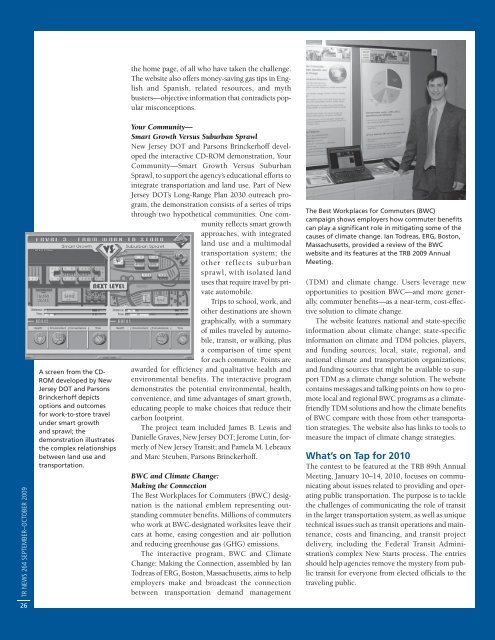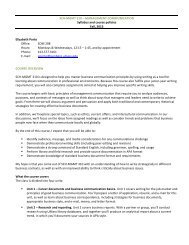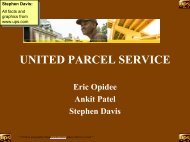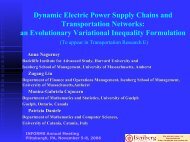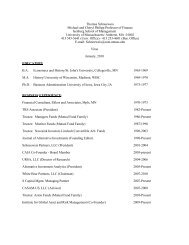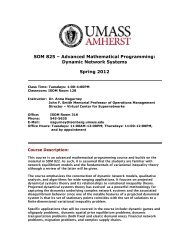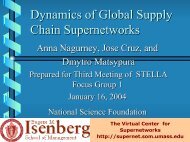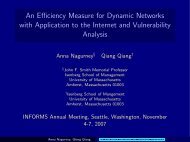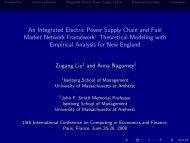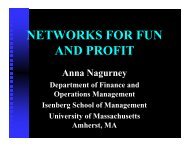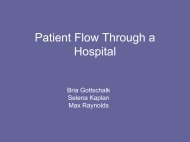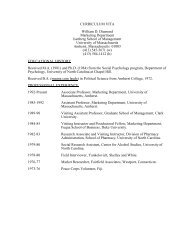TR News - Transportation Research Board
TR News - Transportation Research Board
TR News - Transportation Research Board
- No tags were found...
Create successful ePaper yourself
Turn your PDF publications into a flip-book with our unique Google optimized e-Paper software.
the home page, of all who have taken the challenge.The website also offers money-saving gas tips in Englishand Spanish, related resources, and mythbusters—objective information that contradicts popularmisconceptions.<strong>TR</strong> NEWS 264 SEPTEMBER–OCTOBER 2009A screen from the CD-ROM developed by NewJersey DOT and ParsonsBrinckerhoff depictsoptions and outcomesfor work-to-store travelunder smart growthand sprawl; thedemonstration illustratesthe complex relationshipsbetween land use andtransportation.Your Community—Smart Growth Versus Suburban SprawlNew Jersey DOT and Parsons Brinckerhoff developedthe interactive CD-ROM demonstration, YourCommunity—Smart Growth Versus SuburbanSprawl, to support the agency’s educational efforts tointegrate transportation and land use. Part of NewJersey DOT’s Long-Range Plan 2030 outreach program,the demonstration consists of a series of tripsthrough two hypothetical communities. One communityreflects smart growthapproaches, with integratedland use and a multimodaltransportation system; theother reflects suburbansprawl, with isolated landuses that require travel by privateautomobile.Trips to school, work, andother destinations are showngraphically, with a summaryof miles traveled by automobile,transit, or walking, plusa comparison of time spentfor each commute. Points areawarded for efficiency and qualitative health andenvironmental benefits. The interactive programdemonstrates the potential environmental, health,convenience, and time advantages of smart growth,educating people to make choices that reduce theircarbon footprint.The project team included James B. Lewis andDanielle Graves, New Jersey DOT; Jerome Lutin, formerlyof New Jersey Transit; and Pamela M. Lebeauxand Marc Steuben, Parsons Brinckerhoff.BWC and Climate Change:Making the ConnectionThe Best Workplaces for Commuters (BWC) designationis the national emblem representing outstandingcommuter benefits. Millions of commuterswho work at BWC-designated worksites leave theircars at home, easing congestion and air pollutionand reducing greenhouse gas (GHG) emissions.The interactive program, BWC and ClimateChange: Making the Connection, assembled by IanTodreas of ERG, Boston, Massachusetts, aims to helpemployers make and broadcast the connectionbetween transportation demand managementThe Best Workplaces for Commuters (BWC)campaign shows employers how commuter benefitscan play a significant role in mitigating some of thecauses of climate change. Ian Todreas, ERG, Boston,Massachusetts, provided a review of the BWCwebsite and its features at the <strong>TR</strong>B 2009 AnnualMeeting.(TDM) and climate change. Users leverage newopportunities to position BWC—and more generally,commuter benefits—as a near-term, cost-effectivesolution to climate change.The website features national and state-specificinformation about climate change; state-specificinformation on climate and TDM policies, players,and funding sources; local, state, regional, andnational climate and transportation organizations;and funding sources that might be available to supportTDM as a climate change solution. The websitecontains messages and talking points on how to promotelocal and regional BWC programs as a climatefriendlyTDM solutions and how the climate benefitsof BWC compare with those from other transportationstrategies. The website also has links to tools tomeasure the impact of climate change strategies.What’s on Tap for 2010The contest to be featured at the <strong>TR</strong>B 89th AnnualMeeting, January 10–14, 2010, focuses on communicatingabout issues related to providing and operatingpublic transportation. The purpose is to tacklethe challenges of communicating the role of transitin the larger transportation system, as well as uniquetechnical issues such as transit operations and maintenance,costs and financing, and transit projectdelivery, including the Federal Transit Admini -stration’s complex New Starts process. The entriesshould help agencies remove the mystery from publictransit for everyone from elected officials to thetraveling public.26


